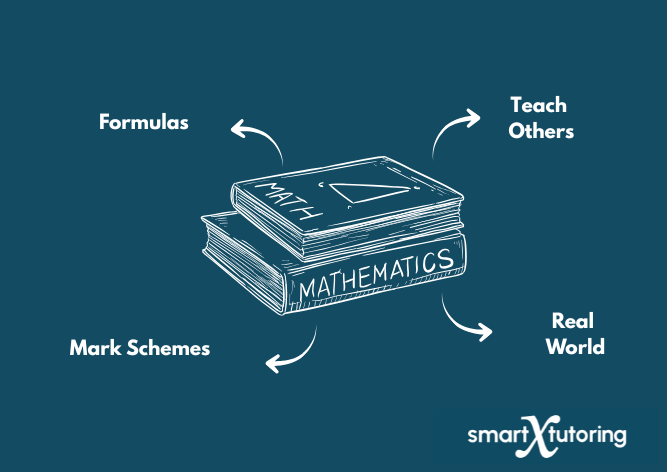
Revising for GCSEs can be overwhelming, every subject you take is different and you can’t revise in the same way for each subject.
To really excel in GCSE Maths you need to understand a few key things:
Formulas are the most important part of GCSE Maths, understanding and memorising formulas will help you pick up easy marks throughout all 3 Maths papers.
For example – The Sine Rule – This one is given to you in the Formula sheet for most exam boards but it is important to learn the concepts to make use of the Formula.
You can find the Formula booklets for the relevant exam boards here:

The exam board itself provides you with a lot of valuable information. The actual exam you sit for your GCSE Maths is determined by the exam specification and the marking schemes provide an insight as to how exactly the exam board wants you to answer the questions.
Maths is a broad subject and often there is multiple steps involved in answering questions, sometimes you can do these steps in your head and forget to write them down. This is where you start to lose marks of you are not careful.
Here are some common pitfalls:
TOP TIP – Always leave 10 minutes at the end of your paper to go back and check for all 3 of the above in each of your answers.
This one is a game changer.
Maths is everywhere around us, when it comes to complex formulas or even calculating quick percentages, having a real world example to relate back to can help you retain information in your memory and also problem solve quicker when tackling long questions from the exam papers.
Here are a few examples:

Topic: Percentages, Ratios, Unit Rates
Example: Comparing offers like “25% off” vs “Buy 2 for £5” or calculating best value per 100 g.
Why it matters: Helps students make smarter money choices and see the value of unit pricing and percentage change.

Topic: Speed = Distance ÷ Time
Example: If a car travels 150 km in 2 hours, the average speed is 75 km/h.
Real use: Estimating travel time for holidays, deciding whether a train or car is faster, or checking Google Maps journey estimates.
SmartX Tip: Next time you travel, predict arrival time and compare it to reality — that’s maths in motion!

Topic: Mean, Median, Range, Probability
Example: Analysing player stats (average goals, pass completion rate, or shot accuracy).
Why it matters: Sports analytics — from football to Formula 1 — relies on GCSE-level statistics to inform strategy.
Practise papers and past papers are your best friends. The best way to revise for Maths is using past papers.
Doing past papers can also give you a lot of insights into future revision planning.
Follow this method to get the most out of each past paper.
1. Complete a past paper in timed conditions
Make sure it is strictly in timed conditions without any distractions. Pretend you are in the GCSE Exam hall.
2. Mark your work using the mark schemes but DO NOT write the correct answers
Whilst you are marking your work make a note of reasons as to why you are getting questions wrong, this could be categorised into:
– Silly Mistakes – Lack of content – Not enough working out
3. Go over the wrong answers and reattempt them a second time but in a different colour
4. Mark your work again
5. Use the mark scheme to correct yourself
If you are getting struggling with content it is important that you seek help by asking your school, parents or even reaching out to a tutor!
© 2024 SmartX Tutoring | Privacy policy | Cookies | Terms & Conditions